The significance of having functional and efficient drainage systems cannot be underestimated in the modern world of construction and infrastructure. HDPE (High-Density Polyethylene) drainage pipes have become more popular due to their durability, elasticity, and resilience to rusting. This comprehensive guide provides an in-depth understanding of HDPE drainage pipes by discussing their features, advantages, installation processes, and typical applications. In case you are a homeowner who wants to install a proper water waste disposal system or you work for the construction business on a professional basis, this article will enable you to make the right choices about HDPE drainages. However, it is also worth mentioning that these guidelines do not apply in all cases.
What is an HDPE Drainage Pipe?
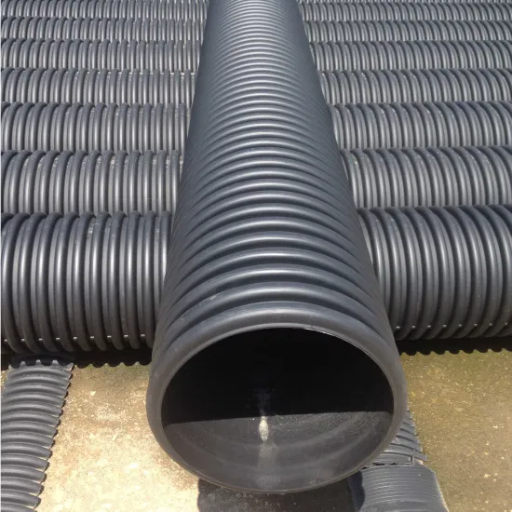
Image source: https://senpupipe.en.made-in-china.com/
HDPE drainage pipes are seamless, flexible tubes made from high-density polyethylene designed explicitly for effective water flow management and control. These tubes are known for being lightweight yet durable; they are also chemical resistant, making them suitable for residential, commercial, and agricultural purposes, including septic tanks. The smooth inside lining enhances fluid velocity while gust preventing clogging; additionally, corrosion immunity ensures that the tube lasts longer in even the harshest conditions available, making it useful in various settings, particularly where an underground sewerage system is required. Overall, HDPE drainage pipes play significant roles in modern-day drains’ practical and sustainable designs.
Definition and properties of HDPE
High-density polyethylene (HDPE) is a type of thermoplastic polymer that is derived from petroleum. With its high strength-to-density ratio, HDPE is widely used in applications requiring toughness and resistance to impact, moisture, and chemicals. It has a melting point of approximately 130–135 °C (266–275 °F) with excellent UV resistance, which makes it suitable for outdoor use. Some of the fundamental properties include:
- Durability: HDPE’s long-lasting performance prevents abrasion, corrosion, and stress cracking.
- Flexibility: Its natural flexibility enables easy installation and suits various layouts and designs.
- Chemical Resistance: HDPE is not affected by degradation processes resulting from acids and bases, among other substances, which are vital in drainage systems.
- Lightweight: This characteristic simplifies handling during installation operations, thus reducing transport costs.
These features make it perfect for drainage pipes and other tasks that require steady, durable performance over the long term.
Benefits of using HDPE for drainage applications
There are several reasons why High-Density Polyethylene (HDPE) should be used for drainage applications:
- Enhanced Flow Rates: The low friction smooth interior surface minimizes flow hindrances, increasing flow rates and minimizing blockages. This property is essential for efficient drainage maintenance.
- Resistance to Environmental Factors: HDPEs are resistant to various environmental factors, such as variations in humidity or temperature. Due to their UV resistance, they can also be left under direct sunlight over extended periods without damage, making them ideal materials for outdoor drain installations.
- Cost-Effectiveness: Although the initial cost may be higher than some alternatives, HDPE’s durability and longevity support lower ongoing maintenance and replacement expenses. Additionally, this lightweight feature reduces the cost of transportation and installation fees.
- Sustainability: Compared with traditional materials, HDPE can be recycled or repurposed, becoming an environmentally friendly option. Moreover, its longer life span reduces waste over time, supporting construction practices that are more consistent with sustainable goals for drainage and building.
These advantages make HDPE the best choice for various drainage applications in the residential, commercial, and agricultural sectors.
Comparison with other types of drainage pipes
When it comes to comparing HDPE with other materials for making drainage pipes like PVC and concrete, many factors can be considered:
- Material strength: Durability and strength are the key characteristics of concrete pipes, but they can crack under certain conditions. Conversely, HDPE exhibits impact resistance and stress without jeopardizing its integrity, enabling it to serve in various installations.
- Weight and handling: In contrast to concretes, which PVC cannot beat in weight by much, HDPE is much lighter than either of them, hence simplifying installation and transportation. This attribute significantly reduces labor costs as well as deployment time.
- Corrosion resistance: Unlike metal pipes and concrete, which may corrode or break over time, HDPE is innately impervious to chemicals and environmental agents, thus improving its longevity while reducing maintenance requirements.
- Installation flexibility: The heat fusion technique makes joining HDPE pipes a walkover, making the connection invisible. On the other hand, solvent cement is needed for PVC, while concrete must have additional structural support, making it less flexible than HDPE in most situations.
In summary, though each material has unique benefits, HDPE outperforms others due to its unique combination of long-lastingness, low cost, and ease of fixing, making it a favorite for numerous drainage purposes.
How to Install HDPE Drainage Pipe
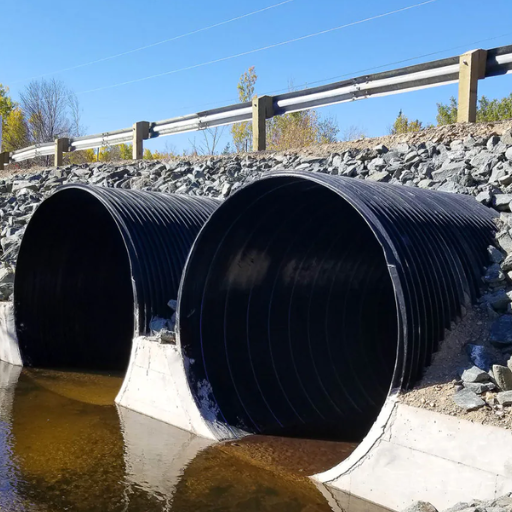
The process of installing HDPE drainage pipe can be broken down into a few easy steps to ensure that it properly drains and serves for a long:
- Plan the Design: Firstly, develop a drainage plan according to the site’s requirements. Take note of any grading or slope necessary for efficient water movement.
- Excavate Trenches: A trench is dug that is wide and deep enough to accommodate both pipes and any additional bedding material required. The trench should have a consistent slope, preferably at least 1-2%, to facilitate flow.
- Include Bedding Material: Put some hard material, such as gravel, crushed stone, etc., at the bottom of the trench. This bedding is important for holding up the tube and promoting water movement.
- Cutting and Joining Pipes: Use pipe cutters to cut HDPE pipes into preferred lengths. Connect pipes using heat fusion techniques, which guarantee proper sealing. Follow the manufacturer’s instructions on appropriate fusion techniques.
- Put in Pipe: Be sure to keep the joined HDPE tubes within the trench, allowing them to retain their designed slopes without sharp bends or kinks that may lead to blockages.
- Backfill Around the Pipe: Once installed, backfill the trench with extra gravel or soil sturdily supporting pipes and compacting surrounding materials so they do not settle over time.
- Final Touches: Smooth off any disturbed surface. If landscaping was affected during installation, it can be restored.
Following these steps, successfully installing HDPE drainage pipes will enhance performance and durability.
Step-by-step installation process
- Plan and Design: Examine where the drainage system will be installed. Depending on the terrain of the area and the desired drainage needs, decide on what size and type of drainage is necessary.
- Gather Materials: These should include HDPE pipes, fittings, gravel for bedding, and tools such as a pipe cutter and shovel.
- Trench Digging: The trench should be appropriate for the pipes while keeping a slight slope to ensure well-functioning drainage.
- Add Bedding: You must first spread gravel at its base to enhance water movement through the trench and hold up the drainage tubes.
- Pipe Cutting And Joining: Cut pieces of HDPE tubing that fit precisely into their respective sections, and then use proper fusion techniques to connect them firmly.
- Pipe Installation: Ensure that when placed in a trench, they maintain their alignment with slopes so that they can drain more efficiently
- Backfill And Compact: The materials used to cover up the pipe, hence preventing any form of collapsing or settling around it, should be soil or gravel, which are also compacted.
- Surface Restoration: As a finisher, ensure that it blends back into its environment unnoticeably after completion.
The process builds up dependable runoff control systems when following this systematic plan.
Necessary tools and materials
For a successful installation of HDPE drainage pipes, the following tools and materials are necessary:
- HDPE Pipes: The right size and length depends on the drainage needs.
- Pipe Fittings: They can include bends, tees, and couplings to facilitate connections and changes in direction.
- Gravel: Coarse gravel for bedding helps support the pipe and promote drainage.
- Pipe Cutter: It is a unique instrument for cutting HDPE pipes cleanly.
- Shovel: For excavating trenches and relocation of materials
- Compactor or Tamper: This will help you effectively compact backfill material around the pipes.
- Level or Transit: To ensure proper alignment and slope of the drains.
- Safety Gear: Gloves, goggles, hard hats to safeguard yourself as you install these systems
With these facilities at hand, setting up is easier while improving the performance of your drain system.
Common mistakes to avoid during installation
- Improper Trench Depth: Failure to dig a trench with the correct depth can affect the effectiveness of drainage. Ensure the trench is deep enough for the pipe and has a proper slope.
- Ignorance of Slope Requirements: Maintaining a proper gradient for adequate drainage is a prevalent mistake. The aim here is that water should move to encourage rather than discourage blockage.
- Compaction of Backfill Is Not Enough: The lack of adequate compaction for backfilling materials may result in settlement over time, which could damage pipes or disrupt drains. Adequately compacting material around pipes is crucial.
Can HDPE drainage Pipes be used for stormwater and sewer systems?
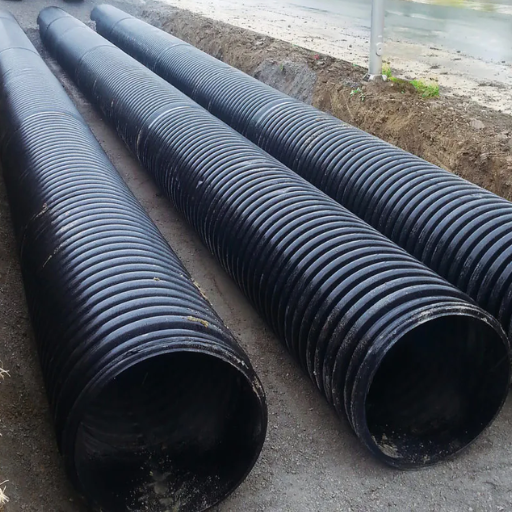
Certainly, HDPE (High-Density Polyethylene) drainage pipes can be used effectively in storm and sewer systems because their toughness, rust resistance, and flexibility allow them to deal not only with stormwater outflows but also sewage waste in sewer applications. Such HDPE drain pipes will not easily break or crack under different environmental conditions, hence offering lasting solutions when drainage services are needed. By so doing, they reduce blockage risks, thus enabling free flow and making them appropriate for all these systems and having smooth inner surfaces.
Suitability for stormwater management
HDPE drainage pipe is advantageous for stormwater management because of its lightweight, firm structure and ability to withstand environmental factors. Many sources say HDPE pipes can handle heavy rains and excess water quite effectively, as they reduce flooding. Water can flow freely due to its smooth surface, lowering the chances of blockage. Again, the flexibility of HDPE allows for different placements in various topographies as required by the kind of stormwater structures being built. Consequently, research concludes that HDPE pipes are preferred for efficient stormwater management.
Application in sewer systems
HDPE drainage pipes have become popular in sewerage systems due to their high strength and chemical resistance. According to industry standards, these pipes are good at conveying wastewater since they do not allow additional or lost fluids into or out of it, maintain an adequately sealed system, ensure cleanliness, and prevent pollution. In addition, HDPE is highly malleable, thus making it possible for them to be installed easily in any location, including areas with complicated gradients. Several experts argue that the service life of these tubes commonly exceeds 50 years, reducing repair costs while minimizing the need for frequent replacements, hence becoming a budget-friendly approach used in contemporary sewage systems. In conclusion, gravity and pressure sewers both favor the usage of HDPE over other materials because there exist several advantages associated with it.
Advantages in municipal and industrial use
Municipal and industrial fields benefit from HDPE pipes in many ways. Their durability and corrosion resistance makes them suitable for various environments. It can withstand harsh chemicals and extreme temperatures, guaranteeing its longevity and reliability in service. In addition, their lightweight nature makes them easy to transport and install, reducing labor costs and installation time. In addition, they are produced in adherence to strict industry standards, which enhances their performance and safety in critical application areas. Additionally, HDPE has a seamless design that reduces leaks or joint failures, making it one of the best materials for municipal infrastructure or industrial works. Conclusively, these benefits have played an essential role in the growing preference for HDPE pipes on projects focusing on efficiency and sustainability.
What are the Various Types of HDPE Drainage Pipes?
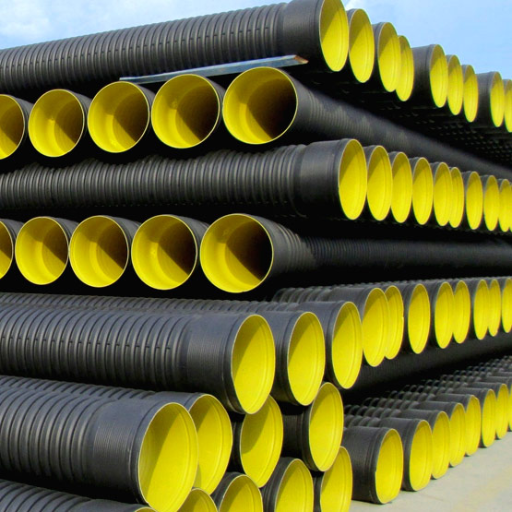
HDPE drainage pipes can be classified into several types based on specific applications or requirements; these are:
- Solid Wall HDPE Pipe: These pipes are usually used in gravity drainage situations. They are of the same thickness throughout and can withstand various chemicals, making them ideal for conveying wastewater and stormwater.
- Perforated HDPE Pipe: These pipes are meant for use in subsurface drainage systems. They have holes or slots through which water enters while sediments remain behind. They find wide applications in agricultural, commercial, and residential drainage projects.
- Structured Wall HDPE Pipe: This kind of pipe has a thin wall plus an internal structure that increases its strength without raising weight levels much. It is common where lightweight but strong high-diameter sizes are needed.
- Dual Wall HDPE Pipe: These pipes consist of two layers—an outer corrugated layer and an inner smooth layer—thereby combining the strength and flexibility desired for different drainage and sewerage functions.
All these types assure effective drainage systems and contribute to the overall resilience and sustainability of water management systems.
Single wall vs. dual wall HDPE pipes
When looking at HDPE pipes for single or two walls, their structure and suitability matter the most. Single-wall HDPE pipes are uniform in thickness, lightweight, and easy to handle. They are perfect for gravity drainage systems with little concern about strength and come with low initial costs. On the other hand, dual wall HDPE pipe consists of an outer corrugated wall and an inner smooth wall, which makes them more structurally solid and capable of resisting external loads than single-walled pipes. These features make dual wall type ideal for more durable applications such as stormwater management or sewer systems. Besides this, inner smooth walls assist in fluid flow efficiency, preventing blockages from occurring. The choice of which type to use depends on the requirements of a given project; thus, it is essential to consider the intended application and environmental factors before deciding on a suitable pipe.
Perforated vs. non-perforated options
The main difference between perforated and non-perforated pipes primarily lies in their purpose of use and functionality. Perforated piping entails having holes along its length, thereby allowing water into the pipe, leading to its applications being referred to as leaching or drainage purposes as need be considered appropriate by different individuals using them so far, like French drains within sub surfaces under which cases there is excessive groundwater to be managed besides flood prevention measures. Conversely, non-perforated offer a solid structure without any openings, making them convenient for carrying water over long distances while keeping all flowing through intact when required, mainly during floods, among other reasons, in areas that need erosion control or structural support. Non-perforation options are used because they act as barriers stopping soil movement from outside towards where water remains inside through sedimentary channels whereby external soil or sediments can get through if no proper care was observed upon designing; hence, they provide erosion control and structural support in such places where rivers bank may erode quickly making building near those places very dangerous due number deaths experienced every year as many are either swept away by fast-moving water or even crushed down by building structures that have already collapsed around them. Ultimately, the choice of pipe type depends on a given project’s specific design criteria and water management requirements.
Different diameters and lengths are available
Pipes with different lengths and diameters are available for a variety of uses. The standard sizes range from 2 to 48 inches, which can be used for various drainage and plumbing requirements. Furthermore, customization of the pipes length is common among manufacturers, a standard unit is usually between 10 to 20 feet. This implies that it is possible to have tailor-made solutions based on project specifications, ensuring an adequate selection of pipe sizes and lengths suitable for meeting diverse demands in household and commercial projects. When choosing pipe dimensions, you should not only consider flow capacity but also the installation environment and overall project requirements.
Where Can You Purchase HDPE Drainage Pipe?
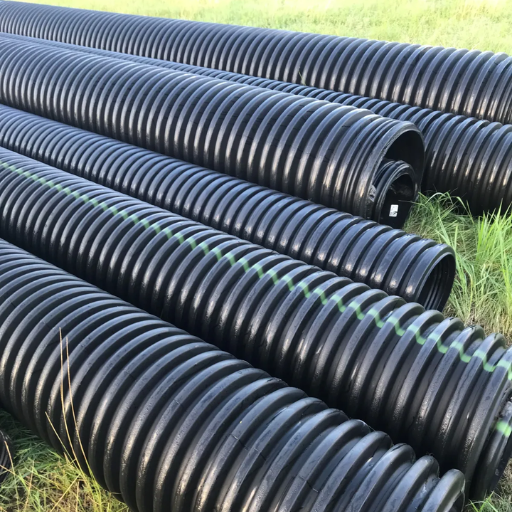
Hardware stores within the locality, outlets specializing in plumbing supplies, such as plumbing supply shops, and construction material dealers sell HDPE drain pipes. Most producers have direct online sales on their websites, so one can place an order using this medium. Home improvement chains also carry various HDPE pipes. Wholesale distributors offer competitive prices and bulk purchase options, especially when handling large-scale projects. Always ensure that the chosen pipe meets all required standards by checking local legislation or specifications before purchase or installation in your area.
Popular suppliers and home improvement stores
- Home Depot
With the largest number of home improvement retail outlets in the country, Home Depot offers a broad range of HDPE drainage pipes and all necessary equipment for installation. Clients can visit its physical store or purchase online, and delivery and in-store pickup are available.
- Lowe’s
Another big name in the home improvement industry is Lowe’s, which sells HDPE drainage pipes and a great selection of building materials. On its website, it provides descriptions of products and feedback from other customers to help buyers make informed decisions.
- Menards
Menards specializes in home improvement items, including plumbing supplies such as HDPE pipes. It ensures highly competitive pricing and provides an easy-to-use web resource for customers who may be contractors or enthusiasts.
To find the most suitable HDPE drain pipe for your project, consider checking out these suppliers, who offer a variety of products at competitive prices.
Online vs. offline purchase considerations
Each option possesses distinctive benefits when choosing between HDPE drainage pipes for online and offline purchases.
Online Buying: Buying online is ideal, as one can compare prices, read through product reviews, and get a wider selection without having to go to various stores. For example, Home Depot, Lowe’s, and Menards have websites that provide detailed specifications that assist in making informed decisions. Moreover, many suppliers offer home delivery services, which make it more convenient.
Offline Buying: Visiting the physical store enables you to examine the pipes physically to ascertain the quality and suitability of your project. Also, some in-store professionals can guide you through the process if you have questions or need direction regarding fitting up. Besides this, materials can be accessed immediately at the physical store, unlike ordering them online, where one has to wait until they arrive.
In conclusion, personal preferences, project schedules, and specific requirements tied to HDPE drainage pipe installation will determine whether an individual opts for the Internet or brick-and-mortar purchasing methodologies.
Price comparison and available offers
Look for information that will help you make the right choice when buying HDPE drainage pipes at the best prices.
- Home Depot: Home Depot often offers promotions on its plumbing materials, including HDPE drain pipes. It also offers discounts when customers buy in bulk, which contractors can take advantage of to save significant amounts while buying large quantities. In addition, they have a price match guarantee, so you are assured to get the best deal anywhere else.
- Lowe’s: Lowe’s is known for its low pricing strategy, particularly for promotion activities concerning HDPE drainage products. They also offer a range of rewards for veterans and regular customers, which means that it is an excellent place to shop for people who make repeat purchases and want to pay less for their goods.
- Menards: Menards is renowned for its competitive prices and frequent sales events when it comes to choosing HDPE drainage pipes. They publish a weekly ad that highlights ongoing offers with different brands and sizes, among others, thus meeting various project requirements.
When comparing these vendors’ prices and deals, you will get the most value out of your money spent on purchasing HDPE drainage pipe.
Recommendations for HDPE Drainage Pipe Installation

When it comes to HDPE drainage pipe installation, adherence to good practices is essential if the best performance is achieved and for the long life of the pipes. Here are some suggestions:
- Site Preparation: Assess the installation area for proper drainage and avoid low-lying areas. Clear any debris and ensure a firm base to prevent future displacements.
- Trenching: Dig trenches deep enough for pipe placement, considering frost lines in cold regions. The trench should also be wide enough to accommodate appropriate backfilling and offer support.
- Pipe Alignment: Ensure tubes do not curve and joints are firmly joined. Use appropriate fittings to maintain slope uniformity of about 1% – 2% for proper drainage flow.
- Testing: Conduct a flow test as soon as possible after installation to determine whether the system is functioning properly. Check for leaks or blockages before backfilling.
- Backfilling: Use native soil or gravel when carrying out backfill operations carefully to avoid big stones or sharp objects that may harm your pipes. Do not compact the backfill heavily because it may settle later on.
By following these recommendations, you will promote adequate drainage while enhancing the lifespan of your HDPE drainage system.
Top expert tips
- Choose the Right Pipe Size: For your drainage to have enough capacity, choose the correct diameter of the HDPE drainage pipe. Larger conduits handle high flow rates but may cost more, so consider size versus performance and budget.
- Use Proper Bedding Materials: Support the tube with suitable bedding materials like sand or fine gravel. This will help relieve stress during backfilling and ensure uniform load distribution across the conduit.
- Regular Maintenance Checks: To detect problems before they become severe, you should schedule a routine inspection of your drain system, for example, blockage issues or signs that indicate wear. Allowing your drains to clear freely avoids costly repair bills later and ensures long-term efficiency.
Taking these expert tips into account can significantly improve the performance and dependability of your HDPE drainage system.
Maintenance and troubleshooting
Maintaining and troubleshooting HDPE drainage systems is crucial to make them last longer and operate optimally.
- Routine Inspections: Regularly observe and physically examine the entire drain line. Note any visible damages, such as pipe cracks, misalignment, or vegetation growth, that may indicate blockages inside it.
- Clear Blockages Promptly: When you get a clog, remove debris or sediment build-up at once. If need be, use a pipe cleaner tool or a high-pressure water jet that does not damage pipes to dislodge stubborn plug-ups.
- Check Joints and Connections: On a periodic basis, look for leaks or separations in joints and connections. Ensure the tightness of fittings by resealing any compromised areas immediately or replacing them, thus preventing water loss and sediment infiltration.
- Keep Record Of Your Maintenance Activities: You should keep a written record that shows what has been done during each maintenance exercise, such as checkups and repairs. This record can assist in distinguishing patterns of failure and, hence, guiding decisions on future maintenance practices.
This way, one can maintain his/her HDPE drain smoothly without interruption throughout the year and deal with any problems that may arise.
Long-term performance and durability
For HDPE plumbing, performance and durability are very important if the system functions well in the long run. To attain these qualities, one should:
- Material Resistance: This material’s resistance to environmental degradation, chemicals, and corrosion contributes positively to its long lifespan. Due to this stability in various environmental conditions, it sustains its structural integrity over time.
- Proper Installation: Therefore, it is extremely important to ensure that HDPE pipes are installed according to the manufacturer’s specifications and local regulations. In addition, proper jointing techniques and alignment can prevent stress points that may result in early failure.
- Environmental Considerations: In this case, soil type and moisture levels within the system’s life span must be factored in any application so as not to spoil the drainage system’s functionality. Additionally, geotextiles are helpful when considering durability.
Thus, by adopting these practices, maintenance teams could significantly reduce costs associated with repairing HDPE drainage systems so that they remain effective and reliable for several years.
Reference sources
-
Plastic Pipe Institute (PPI): This source provides extensive resources on HDPE drainage pipes, including technical details, benefits, and application guidelines. It covers aspects such as durability, flexibility, and environmental benefits. Read more
-
Advanced Drainage Systems, Inc. (ADS): ADS offers detailed product information, specifications, and advantages of using HDPE drainage pipes in stormwater management, agricultural drainage, and infrastructure projects. Read more
-
JM Eagle: This source presents a comprehensive guide on HDPE drainage pipes, including their construction, performance characteristics, and suitability for various applications such as residential, commercial, and municipal drainage systems. Read more
Related Articles:Specification For HDPE Corrugated Drainage Pipe





